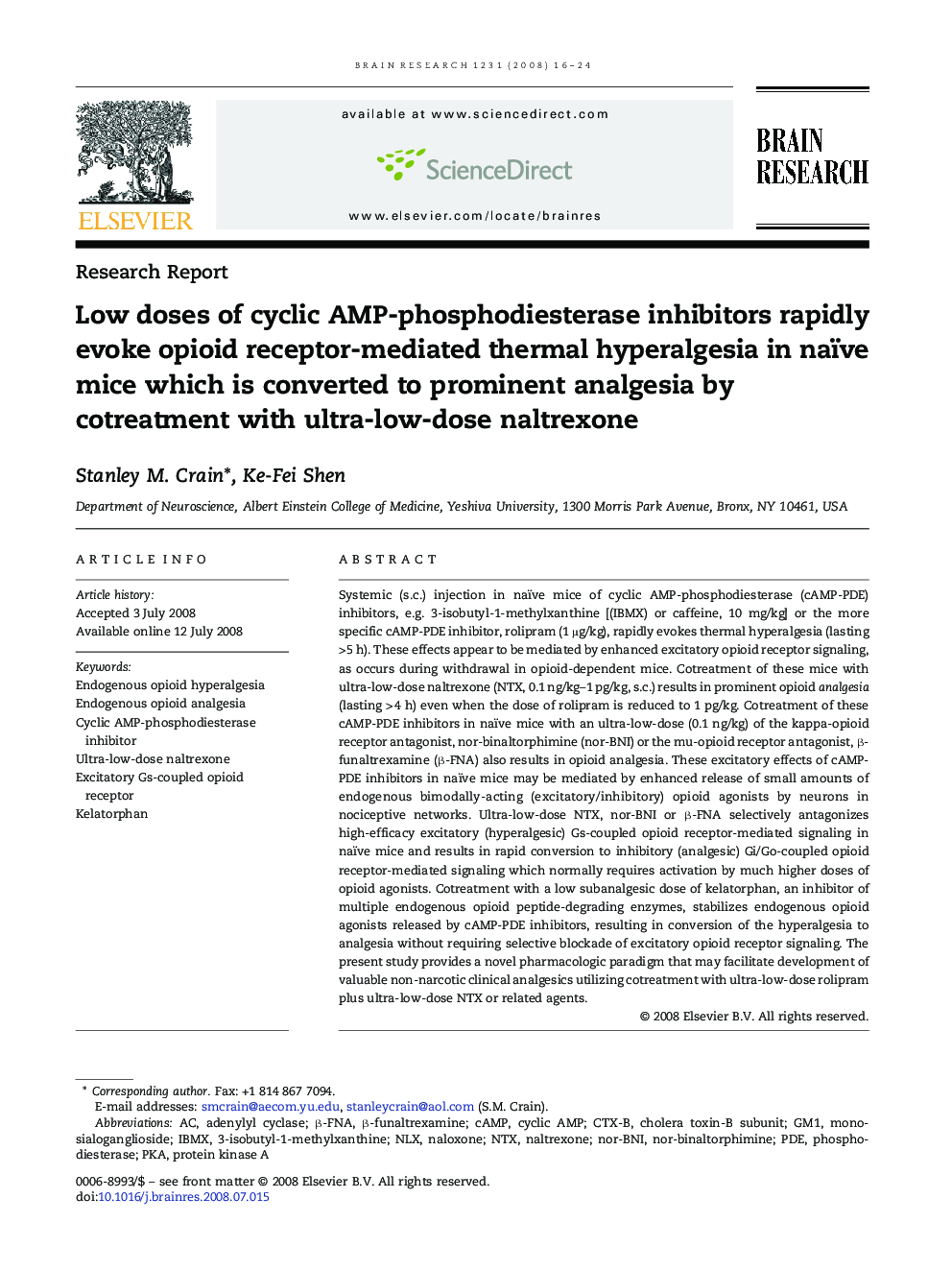| Article ID | Journal | Published Year | Pages | File Type |
|---|---|---|---|---|
| 4329111 | Brain Research | 2008 | 9 Pages |
Abstract
Systemic (s.c.) injection in naïve mice of cyclic AMP-phosphodiesterase (cAMP-PDE) inhibitors, e.g. 3-isobutyl-1-methylxanthine [(IBMX) or caffeine, 10 mg/kg] or the more specific cAMP-PDE inhibitor, rolipram (1 μg/kg), rapidly evokes thermal hyperalgesia (lasting > 5 h). These effects appear to be mediated by enhanced excitatory opioid receptor signaling, as occurs during withdrawal in opioid-dependent mice. Cotreatment of these mice with ultra-low-dose naltrexone (NTX, 0.1 ng/kg-1 pg/kg, s.c.) results in prominent opioid analgesia (lasting > 4 h) even when the dose of rolipram is reduced to 1 pg/kg. Cotreatment of these cAMP-PDE inhibitors in naïve mice with an ultra-low-dose (0.1 ng/kg) of the kappa-opioid receptor antagonist, nor-binaltorphimine (nor-BNI) or the mu-opioid receptor antagonist, β-funaltrexamine (β-FNA) also results in opioid analgesia. These excitatory effects of cAMP-PDE inhibitors in naïve mice may be mediated by enhanced release of small amounts of endogenous bimodally-acting (excitatory/inhibitory) opioid agonists by neurons in nociceptive networks. Ultra-low-dose NTX, nor-BNI or β-FNA selectively antagonizes high-efficacy excitatory (hyperalgesic) Gs-coupled opioid receptor-mediated signaling in naïve mice and results in rapid conversion to inhibitory (analgesic) Gi/Go-coupled opioid receptor-mediated signaling which normally requires activation by much higher doses of opioid agonists. Cotreatment with a low subanalgesic dose of kelatorphan, an inhibitor of multiple endogenous opioid peptide-degrading enzymes, stabilizes endogenous opioid agonists released by cAMP-PDE inhibitors, resulting in conversion of the hyperalgesia to analgesia without requiring selective blockade of excitatory opioid receptor signaling. The present study provides a novel pharmacologic paradigm that may facilitate development of valuable non-narcotic clinical analgesics utilizing cotreatment with ultra-low-dose rolipram plus ultra-low-dose NTX or related agents.
Keywords
Related Topics
Life Sciences
Neuroscience
Neuroscience (General)
Authors
Stanley M. Crain, Ke-Fei Shen,
